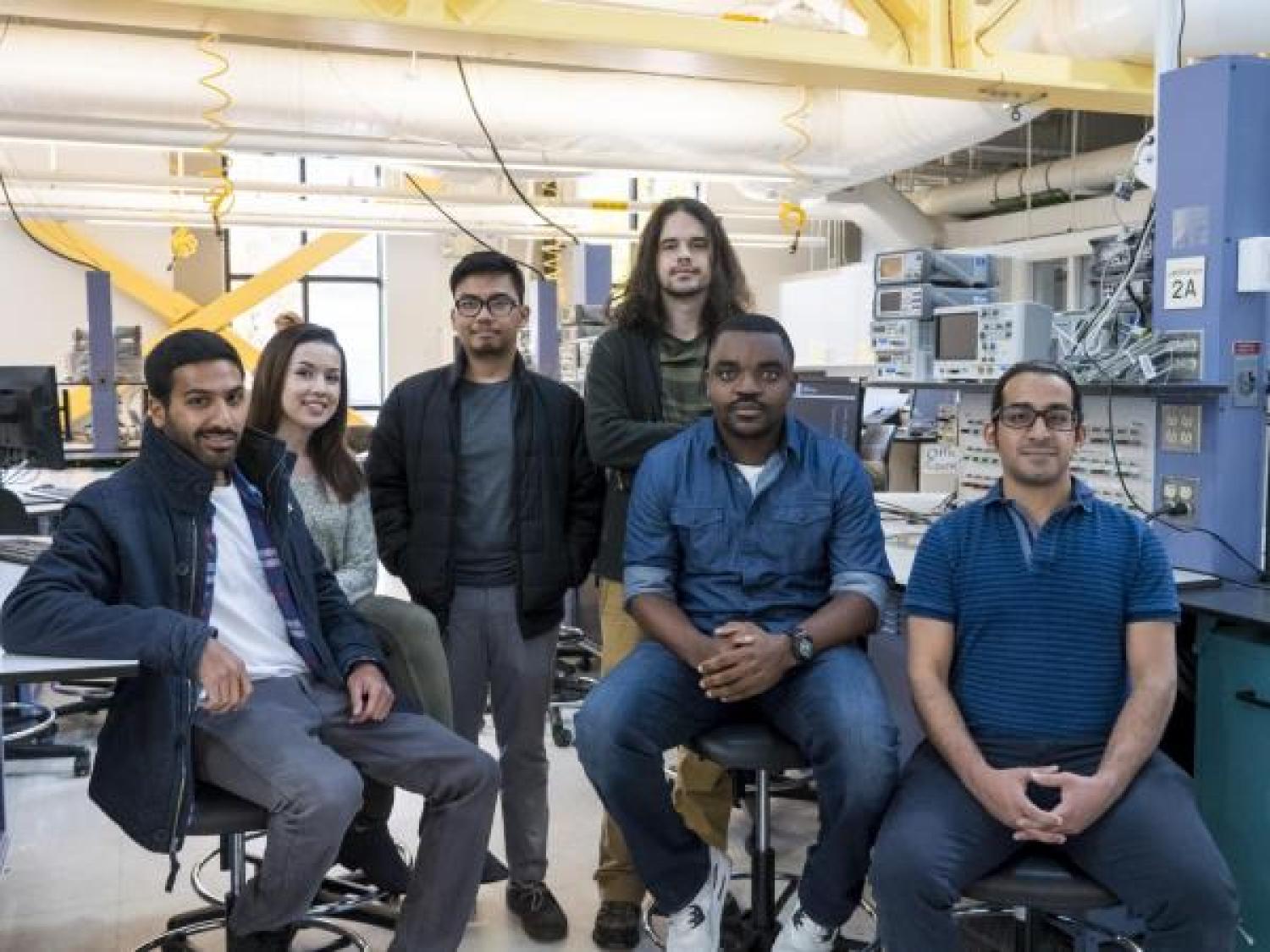Volt Vision

Team Members: Marisa Edwinson, Bader Albader, Ahmed Algallaf, Walter Wright, Muhammad Abdul Rahman, Alexis Deukam
Most products on the market are not designed to include paralyzed or physically challenged individuals in their end user group. These users face the challenge of moving through their day autonomously, without the help of a secondary individual. The product ( V.V.) allows users of all physical capacities to control external devices hands-free and become more independent in manipulating their environment to meet everyday needs. In this way, the product achieves accessibility for just about all individuals in the global population.
The V.V. is a wireless wearable that controls an external device using one’s eyes to send commands. The V.V. merges human touch with technology, evolving from machine-to-machine communication to human-to-machine communication.
V.V. would benefit a large variety of people ranging from children to the elderly. Simply put, anyone with control over their vision is able to use this device.
The focus of the V.V. is to be used to control IOT (Internet of Things) technologies ranging from helping and supporting physically impaired individuals to giving developers a platform to work off of. Developers will benefit by having access to V.V’s SDK, allowing them to program any device to be controlled by V.V. Below we have outlined specific V.V. applications and the groups who would benefit from them:
Entertainment Electronics [ i.e. Toys ]
- Children
- Gamers
- Developers
Unmanned Aerial Exploration Vehicles [ i.e. Drones ]
- Disaster relief groups
- Military
- Drone Enthusiasts
- Terrain exploration
Assistive Appliance [ i.e. Wheelchairs ]
- Physically Debilitated Individuals
Capabilities:
The V.V brings a new concept of controlling devices without the need of handheld device. It uses wireless connection and eye movement to remotely command an interfaced external device with minimal effort, hands-free. Below are more specific use cases outlined to demonstrate the different capabilities of the V.V.
- Toys/Entertainment: V.V could be used to control mobile toys for entertainment purposes with ease, no matter to what degree a child is able to move their limbs.
- Control of UAVs: Military personnel could discreetly control unmanned aerial vehicles from behind enemy lines or in other life threatening environments in which path traversal is physically unsafe. Security systems programmed into device such that a “code” must be unlocked using a specific sequence of eye movements.
- Control of Robots: This wearable device could be used by individuals exploring unknown or perilous terrain to control mobile robotic devices equipped with surveillance devices (cameras) to capture data on the stretch of land. V.V would allow robots to traverse a specific path to find individuals seeking help or to find a location of interest. Cameras equipped on robot allow continuous and real time field of view for the user, allowing the user to remain stationary. The same concept could be applied to users residing inside of buildings such as schools and places of business who use the robots to seek assistance or physical objects to aid in an event of crisis or danger.
- Control of Wheelchairs: Individuals suffering from muscular or limb movement inhibiting conditions could easily transport themselves around environments by using this V.V to control the movement of their wheelchair without assistance from another individual.

